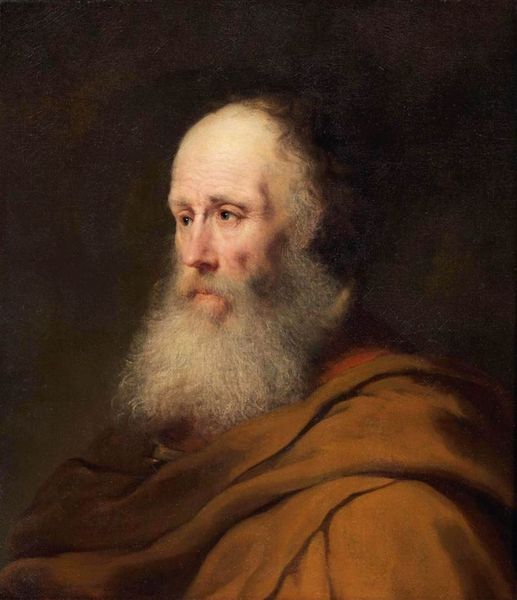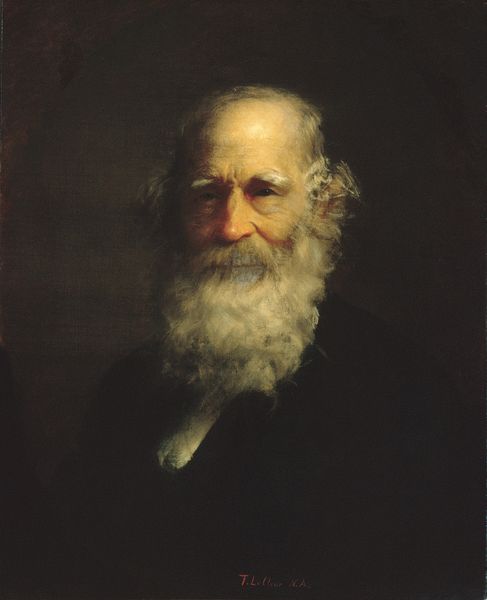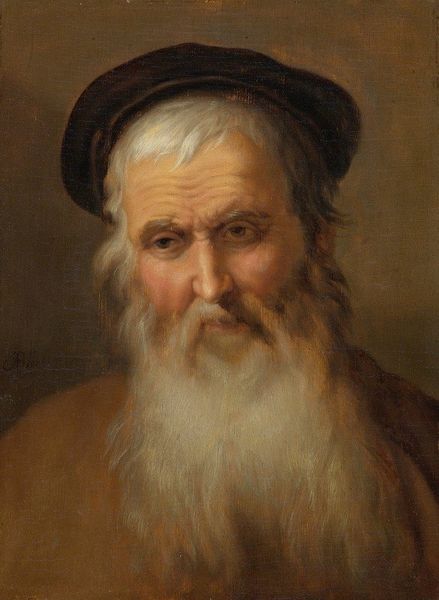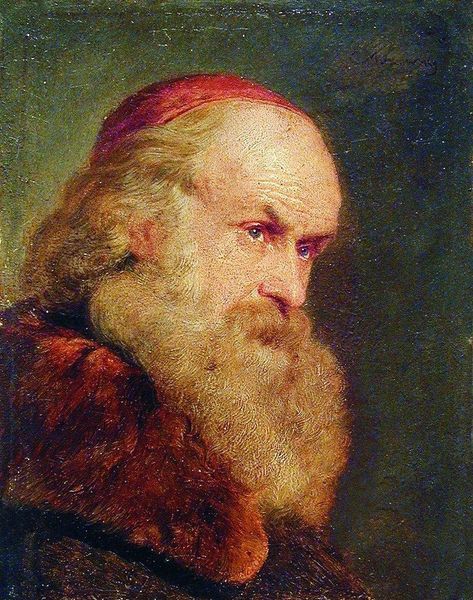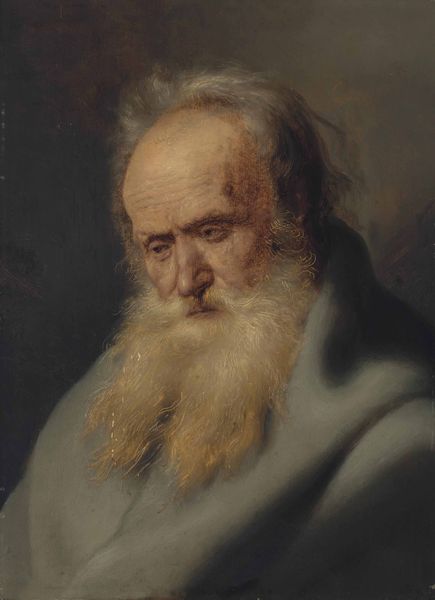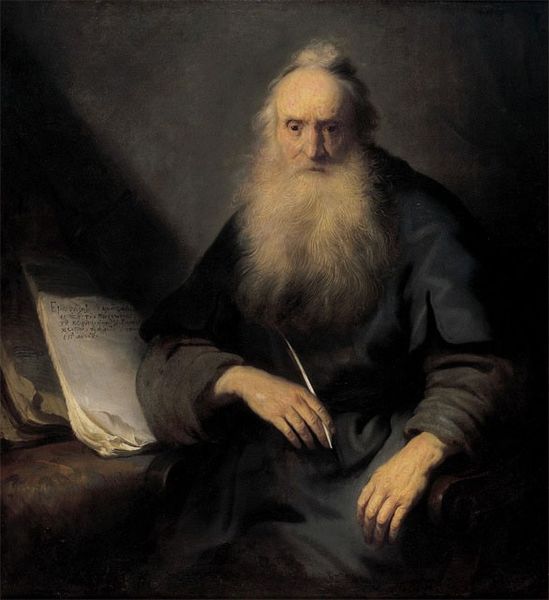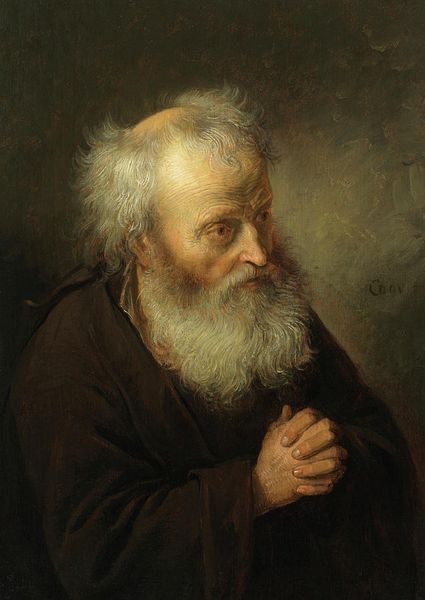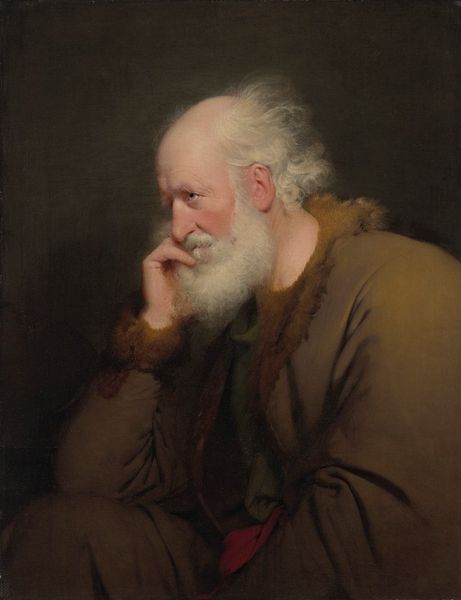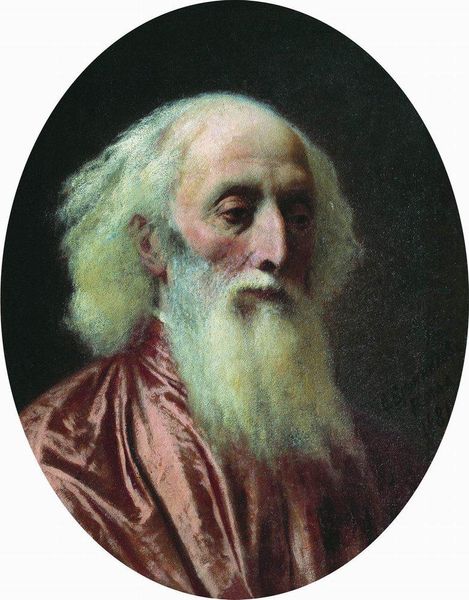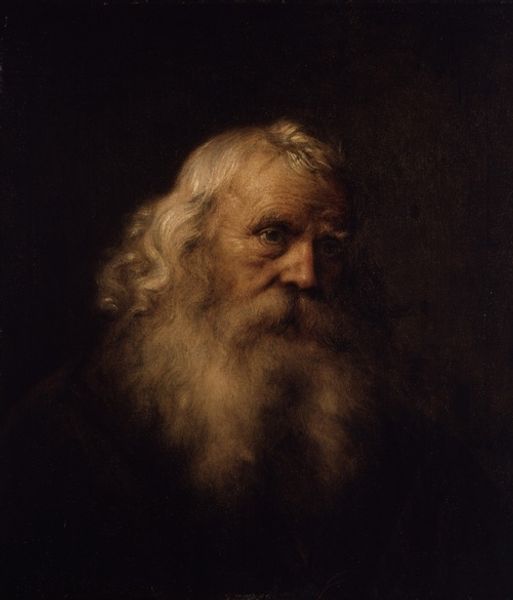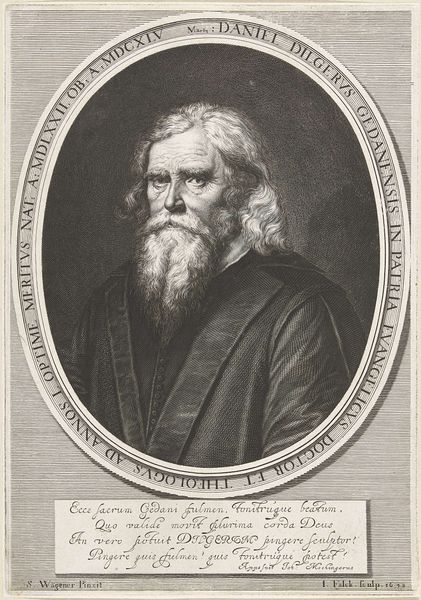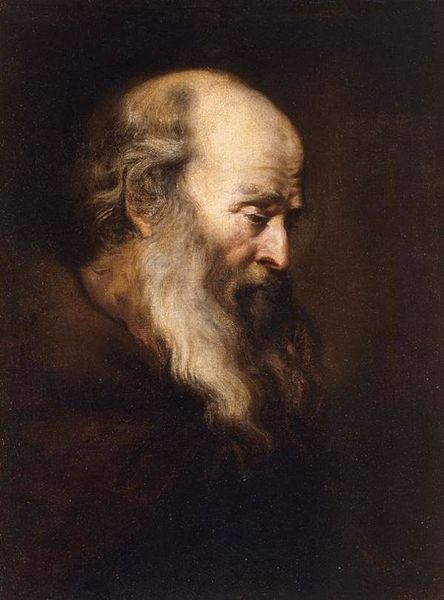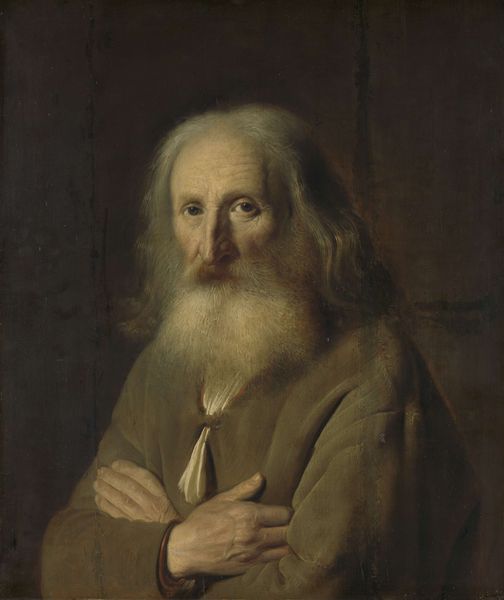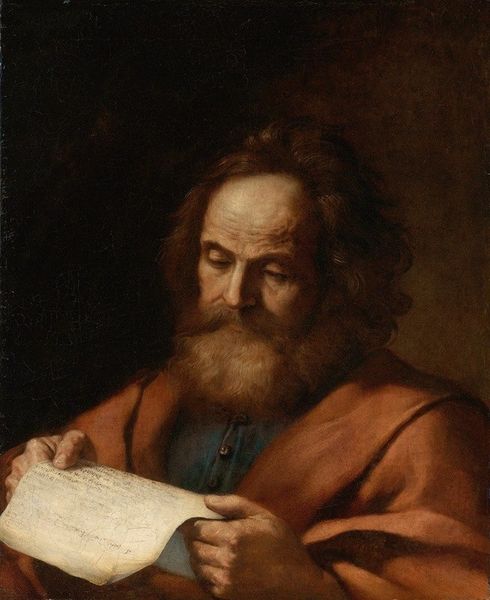
oil-paint
#
portrait
#
baroque
#
oil-paint
Copyright: Public Domain: Artvee
Editor: So this oil painting is titled "Old Man," and it was painted by Abraham Bloemaert around 1635. There's something almost saintly about this figure, especially with that long white beard. What jumps out at you when you see it? Curator: The first thing that captures my attention is the archetypal quality of this image. Bearded elders, especially in the Baroque period, are loaded with symbolic potential. Think of the weight that tradition, wisdom, and even perhaps a sense of patriarchal authority carries with it. Does this image conjure up associations with figures from mythology or religion? Editor: I can see a bit of Moses, or perhaps even Zeus? The long beard definitely gives off that wise, powerful vibe. Curator: Precisely! Bloemaert taps into a wellspring of cultural memory. The beard acts as a visual shorthand, instantly communicating gravitas and experience. Even the way the light catches the wisps of hair seems intentional, almost halo-like. Do you notice anything about his gaze? Editor: It’s averted, directed upwards and slightly off to the side. Almost like he’s contemplating something beyond the immediate present. Curator: Indeed. The upward gaze is often associated with spiritual reflection or divine inspiration. The averted eyes could also imply humility or a turning away from worldly concerns. Consider how these symbols were used during the Baroque era and their continued power in contemporary visual language. What do you make of that? Editor: It's fascinating how Bloemaert used these symbols so effectively; these visual languages have endured, still able to communicate meaning across centuries. Curator: Agreed. By understanding the symbolic weight embedded within such images, we gain a deeper appreciation for the enduring power of art and its connections to the collective unconscious.
Comments
No comments
Be the first to comment and join the conversation on the ultimate creative platform.
